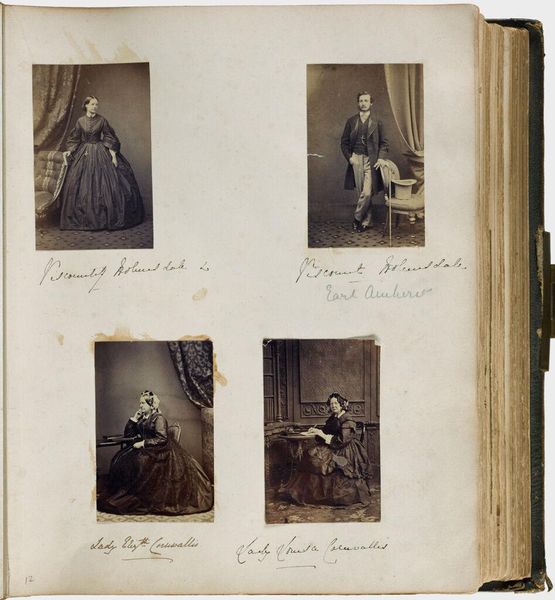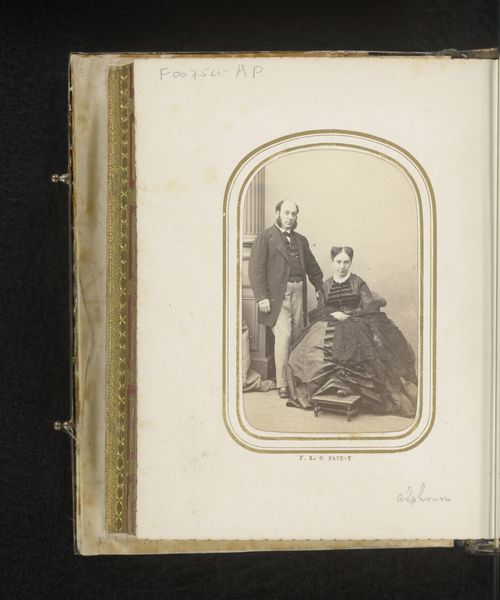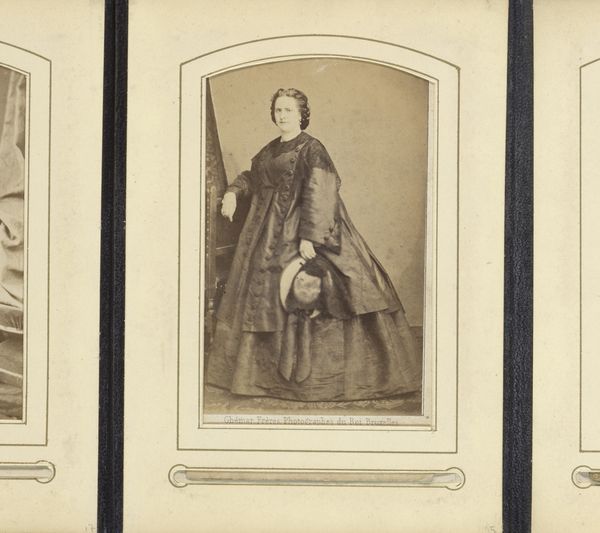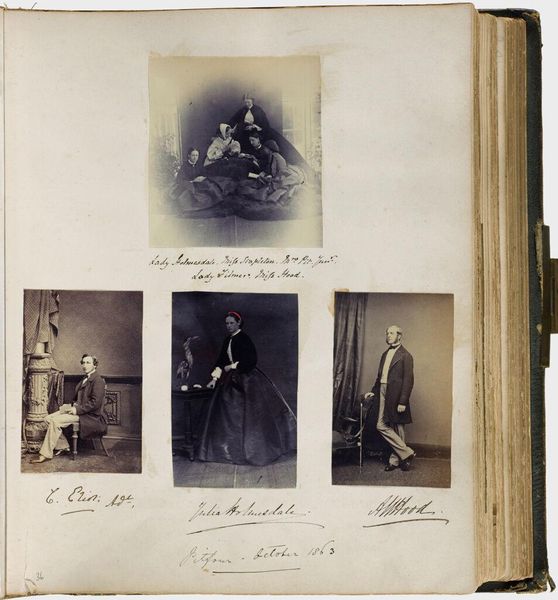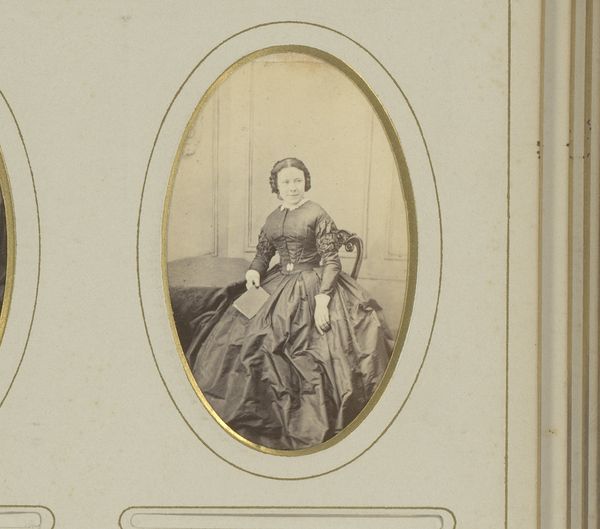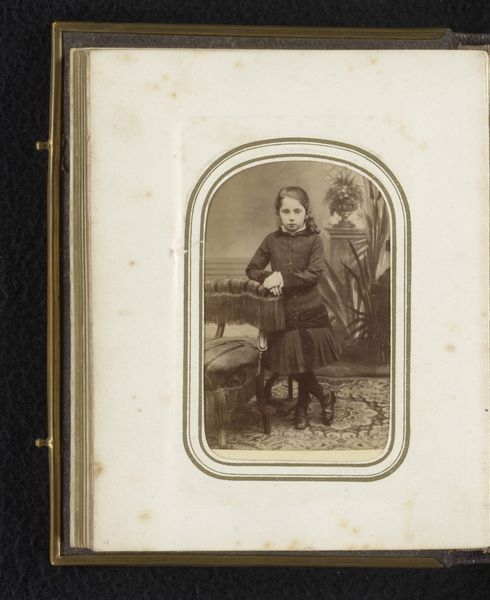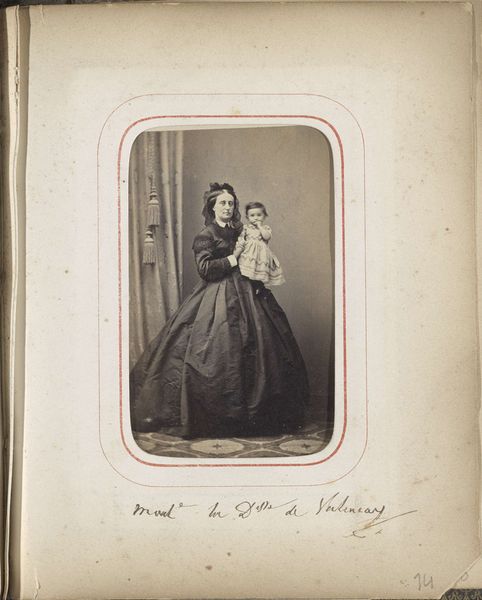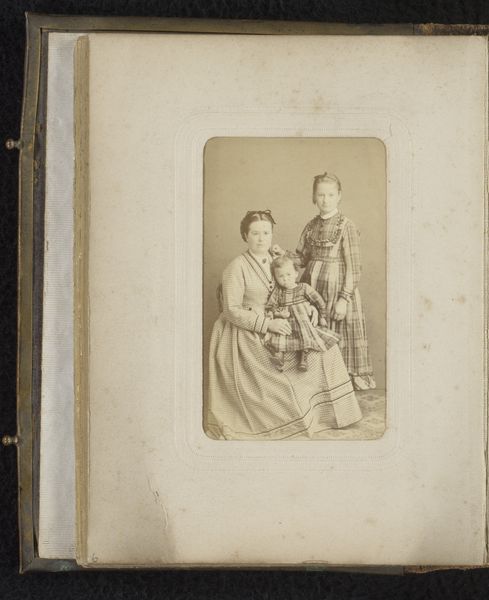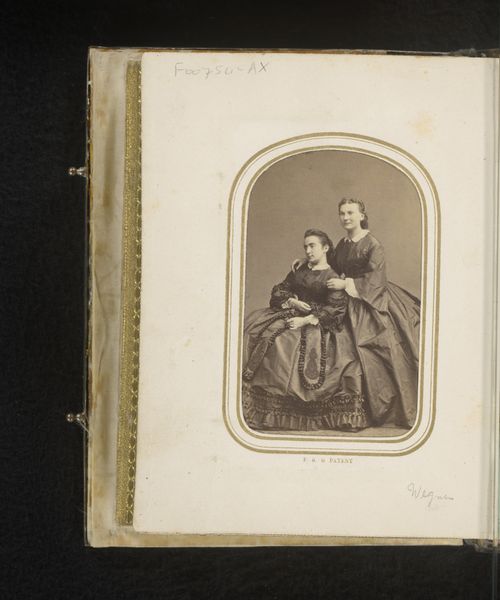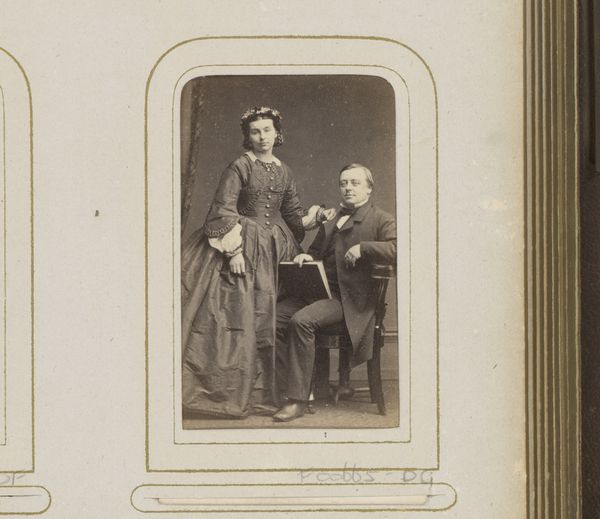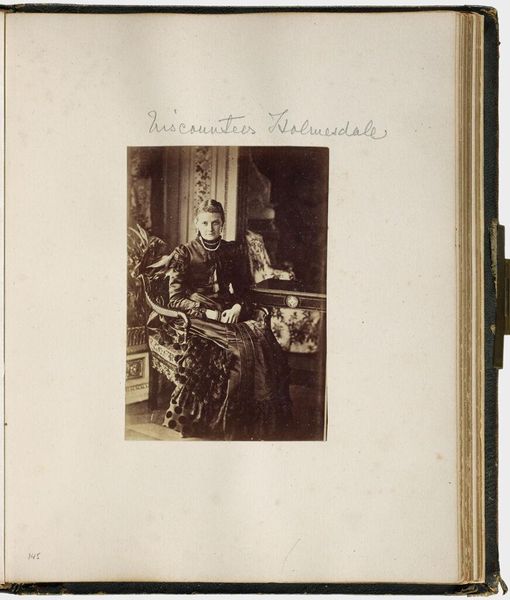
photography
#
portrait
#
16_19th-century
#
photography
#
coloured pencil
#
group-portraits
#
history-painting
#
realism
Dimensions: height 72 mm, width 72 mm
Copyright: Rijks Museum: Open Domain
Curator: Let's discuss this fascinating piece: an 1860 photograph titled "Portret van R.L. Bayliff, kapitein Bayliff in militair kostuum en S.C. Peel," attributed to an anonymous photographer. It depicts a formal group portrait. Editor: My first thought is somber elegance. There’s a stillness, almost a gravity, conveyed in the subjects' poses and the photograph's tonal range. What’s your take? Curator: The setting is likely a photographer's studio, arranged specifically to project a certain image of status and respectability during a period defined by strict social codes and imperial ambition. The portrait speaks volumes about the roles assigned to men and women. Editor: It certainly appears so. Look at the details, the meticulous way the military uniform is rendered—the buttons, the sash. You can imagine the time and labor invested, not only in crafting the garment itself but also in capturing its image so precisely. Was photography newly accessible then? Curator: Indeed. Photography at this time was emerging as a powerful tool for representation. Serving as both a historical document and a social marker. Portraits, in particular, became a way for individuals and families to solidify their place in society, demonstrating their connection to the dominant social order. Editor: Exactly! Thinking about materiality and access, though, one can't help but wonder about the cost and effort involved. Creating that kind of image wasn’t simple or quick. There’s a clear economic and social disparity embedded right into the print. How many ordinary working people have access to the craft of portraiture like this? Curator: That is very true. It shows photography's early role in shaping perceptions of authority and societal values, which helped maintain particular structures. We must remember how this visual record might exclude more diverse groups or experiences. Editor: Absolutely. Examining these photographs can tell us a lot, as a tangible example of societal priorities. By examining it from a material and historical point of view, we get more out of this piece than just names and ranks. Curator: It shows how images served to reinforce and solidify societal norms in that particular historical frame. It's always interesting to consider those complex intersections.
Comments
No comments
Be the first to comment and join the conversation on the ultimate creative platform.
